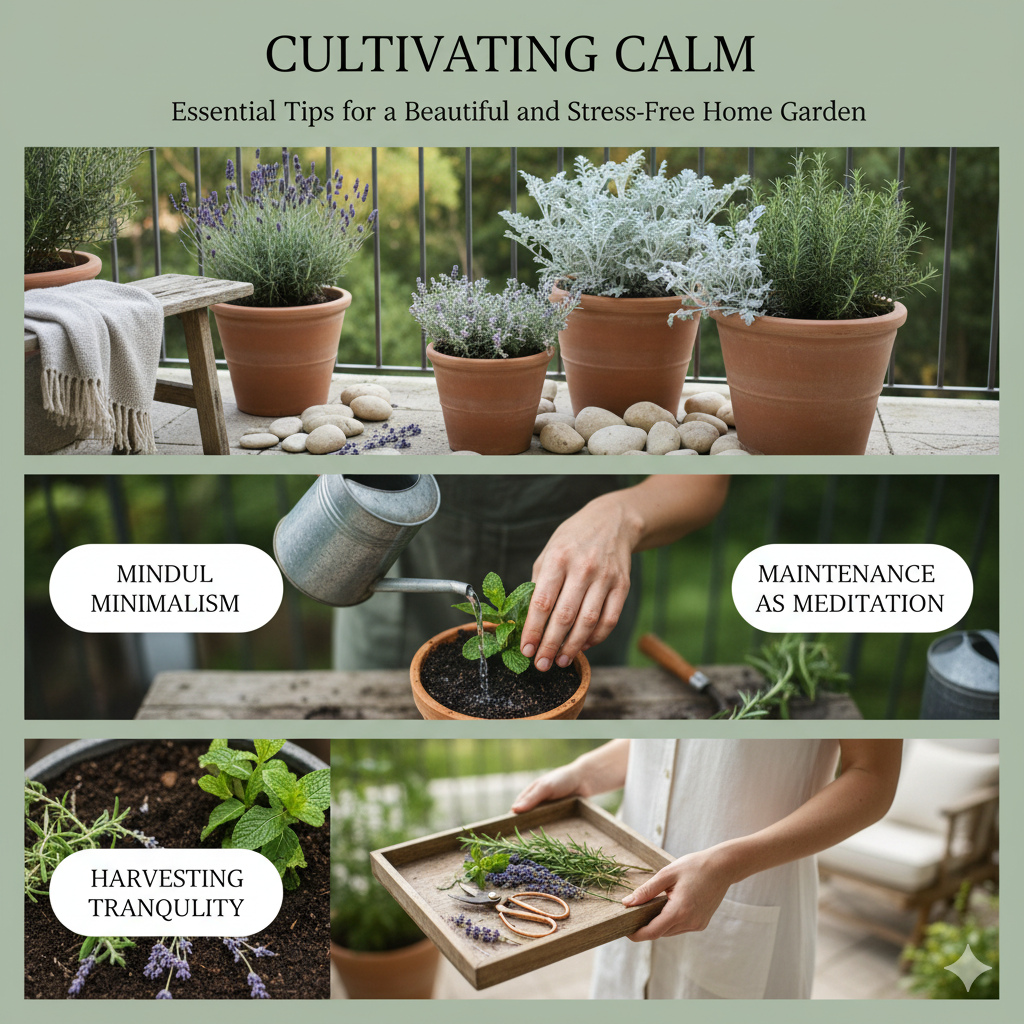
It is more important than ever to establish a real haven for peace and quiet in our overstimulated, constantly-on world. Not only can you grow plants in that neglected plot of soil, that sunny balcony, or that little window box, but you can also use it as a blank canvas to create a purposeful hideaway. The purpose of a peaceful home garden is to create an area that provides beauty, comfort, and a soft connection to the rhythm of nature, not to build a horticultural masterpiece that requires constant maintenance. This all-encompassing method acknowledges that the tranquility you create in your garden will soon mirror the mental calm you experience.
Adopting the mindful minimalism concept is the first step towards designing a tranquil setting. Refrain from packing a small area with too many picky, demanding plants, as this will quickly lead to tension and visual overload. Instead, focus on exciting the senses and creating calming visual lines. Choose plants with delicate color schemes that are naturally soothing, including pastel blues, lavender, and sage. A simple inhalation could become a sensory reset if you place fragrant herbs like mint and rosemary near seating areas. Use simple, organic elements such as smooth river stones, unpainted wood, and clay pots to ground the space and create a sense of calm, natural order.
The real secret to creating peace is to embrace upkeep as meditation, which goes beyond the actual design. Give up thinking about watering, pruning, and weeding as tasks that need to be completed quickly. These focused, repetitive activities are ideal for “flow,” which helps you stay grounded in the here and now. Reduce your pace and genuinely observe the soil’s texture, the leaves’ aroma, and the minute variations in your plants’ development. It has been empirically demonstrated that this association with a slower, quieter procedure lowers stress hormones. You may develop a resilient habit that uplifts your soul more than it depletes your energy by making a commitment to brief but regular gardening sessions, even if it’s only fifteen minutes of attentive watering.
Your inner life is ultimately reflected in your home garden. It will give you back the turmoil and tension you put into it. You may cultivate it with care, simplicity, and purpose, and it will grow into an endless supply of tranquility. You may build a beautiful, useful refuge by wisely choosing to design for peace, reduce visual noise, and make daily care a conscious routine. Throughout the remainder of your hectic life, the resilient calm you carry with you will be the greatest harvest you will receive from your little patch of earth—not the flowers or herbs.
